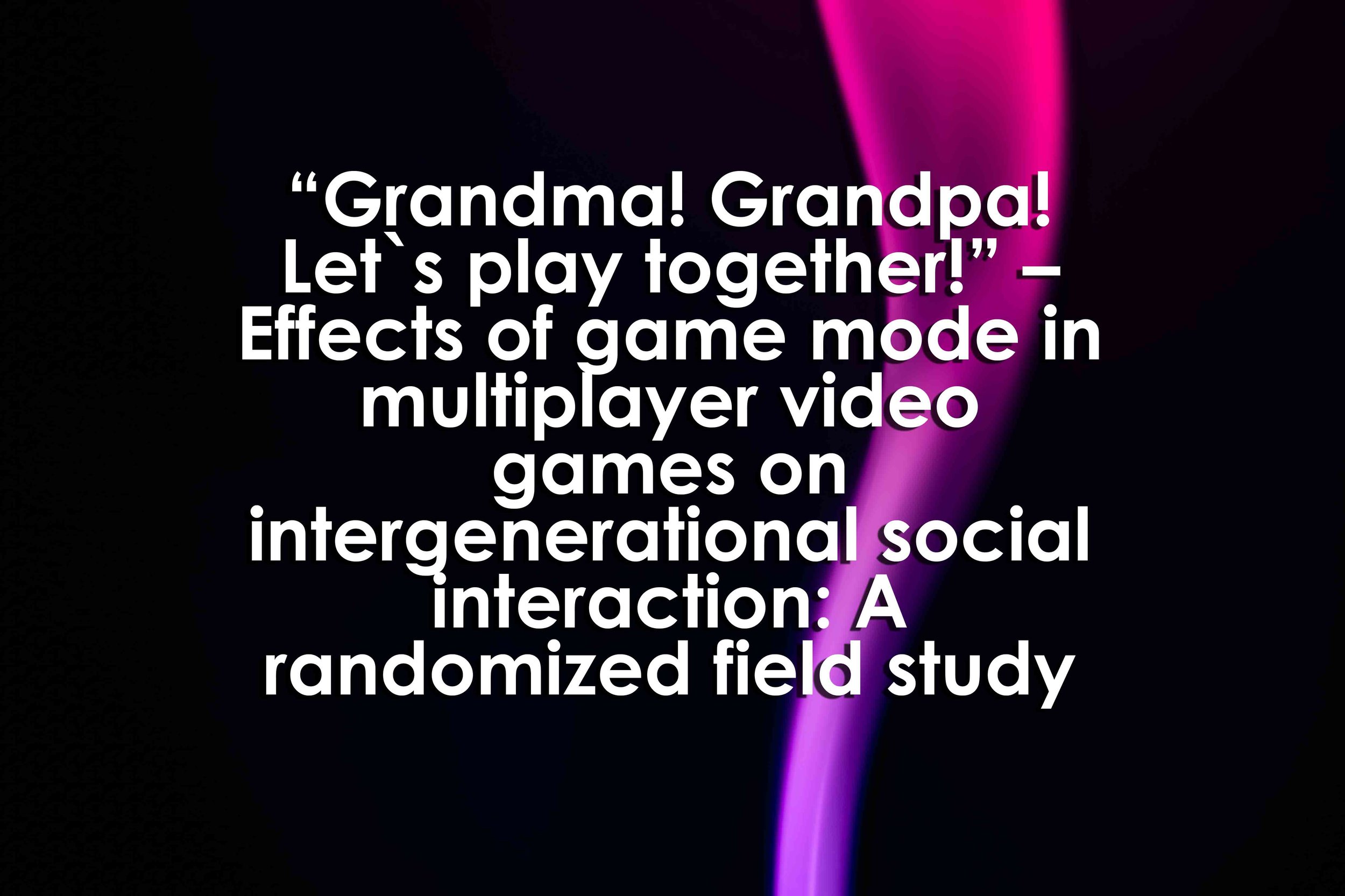“Grandma! Grandpa! Let`s play together!” – Effects of game mode in multiplayer video games on intergenerational social interaction: A randomized field study
“Grandma! Grandpa! Let`s play together!” – Effects of game mode in multiplayer video games on intergenerational social interaction: A randomized field study
“Grandma! Grandpa! Let`s play together!” – Effects of game mode in multiplayer video games on intergenerational social interaction: A randomized field study
By Carmen Zahn, David Leisner, Mario Niederhauser, and Anna-Lena Roos
Abstract
“Background: Maintaining social relationships is a basic human need and particularly essential in old age, including when living in a retirement home. Multiplayer video games can promote positive social interactions among players from different generations while playing. Yet, such facilitation of positive social interactions depends on specific game design. To systematically investigate the effects of game design on social interaction between seniors and their coplayers, the game Myosotis FoodPlanet was developed in this study, and the impacts of 3 different game modes on social interaction were compared in a controlled field trial. Objective: This study aims to compare the effects of 3 different game modes (competitive, cooperative, and creative) on social interactions (verbal and nonverbal communication) between seniors and their younger coplayers. Methods: This study was conducted in a Swiss retirement home as a controlled field trial. Participants were residents of the retirement home (N=10; mean age 84.8 years, SD 5.9 years) and played in pairs with their caregivers. Each pair played 3 game modes in random order. This resulted in 30 game sequences of 20 minutes each. A within-subject design was applied with game mode as the within-factor and social interaction as the outcome variable. To assess the quality of social interaction, 30 video-recorded game sequences were analyzed based on an event sampling method. Results: Analysis of variance for repeated measurements revealed significant effects: there was significantly more verbal communication in the creative mode than in the cooperative mode (P=.04) with a strong effect size (Cohen f=0.611). An examination of verbal communication revealed more game-related communication in the creative mode than in the cooperative mode (P=.01) and the competitive mode (P=.09) with marginally significant effects and strong effect sizes (Cohen f=0.841). In addition, significantly more biography-related communication occurred in the creative mode than in the cooperative mode (P=.03), with a strong effect size (r=0.707). Regarding nonverbal communication (eg, laughing together), analysis of variance for repeated measurements showed significant differences among the game modes (P=.02) with a strong effect size (Cohen f=0.758). Results showed that there was significantly more laughing together in the competitive mode (competitive>cooperative>creative). Conclusions: The results show that game mode can be an important factor for shaping the social interactions of players playing together. Compared with other modes, creative game modes can increase verbal communication. In contrast, competitive modes may stimulate more laughing together. This has important implications for game design and the use of computer games to promote social interaction between seniors and their coplayers in practice.”
Reference
Zahn, C., Leisner, D., Niederhauser, M., &Roos, A. (2021, March). “grandma! grandpa! let`s play together!” – effects of game ... Retrieved April 15, 2022, from https://www.researchgate.net/publication/357144957_Grandma_Grandpa_Lets_play_together_-_Effects_of_game_mode_in_multiplayer_video_games_on_intergenerational_social_interaction_A_randomized_field_study_Preprint
Keywords
Video games, social interactions, multiplayer game, competitive modes, verbal communication, research

